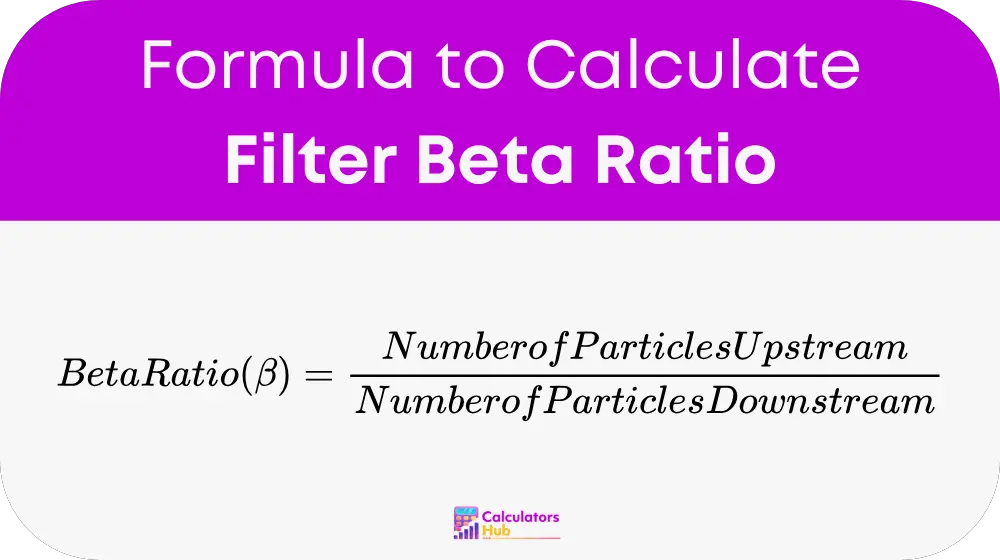The Filter Beta Ratio Calculator helps engineers, maintenance teams, and quality assurance specialists measure how well a filter removes particles from a fluid or gas. The beta ratio shows the ratio of particles before and after filtration, indicating the filter’s ability to capture contaminants of a specific size. A higher beta ratio means better filtration performance. This tool is essential in hydraulic systems, oil filtration, fuel handling, and industrial fluid maintenance. It belongs to the Filtration Performance and Contamination Control Calculator category and is trusted for selecting, comparing, and monitoring filters in critical equipment.
formula of Filter Beta Ratio Calculator

Where:
- Number of Particles Upstream = the count of particles of a certain size before the filter
- Number of Particles Downstream = the count of particles of the same size after the filter
Related Filtration Efficiency:
Filtration Efficiency (%) = [1 − (1 / β)] × 100
This formula converts the beta ratio into a percentage efficiency for easy understanding and reporting.
Common Beta Ratio and Efficiency Reference Table
This table shows typical beta ratios with their equivalent filtration efficiencies for quick reference during system checks or filter comparisons.
| Beta Ratio (β) | Filtration Efficiency (%) | Notes |
|---|---|---|
| 2 | 50% | Basic or coarse filtration |
| 10 | 90% | Medium efficiency filter |
| 20 | 95% | High efficiency filter |
| 75 | 98.7% | Very fine filtration |
| 200 | 99.5% | Premium high-efficiency |
| 1,000 | 99.9% | Ultra-high performance |
This helps maintenance teams pick the right filter grade for specific cleanliness goals.
Example of Filter Beta Ratio Calculator
Let’s calculate a real example step by step.
Suppose a hydraulic oil filter shows:
- 1,000 particles (size ≥ 10 µm) upstream
- 10 particles (same size) downstream
- Beta Ratio:
β = 1,000 / 10 = 100 - Filtration Efficiency:
= [1 − (1 / 100)] × 100
= [1 − 0.01] × 100
= 0.99 × 100
= 99%
So, this filter removes 99% of particles that are 10 µm or larger.
Most Common FAQs
It gives a clear, industry-standard way to compare filters by how well they remove particles of a certain size. It’s more precise than just saying “high” or “low” efficiency.
It depends on your system’s cleanliness needs. For critical hydraulic systems, many specs require filters with β ≥ 200 for key particle sizes.
In routine maintenance, you don’t measure it directly but use lab testing or rely on certified filter specs. Use oil analysis and particle counting to verify real-world performance regularly.